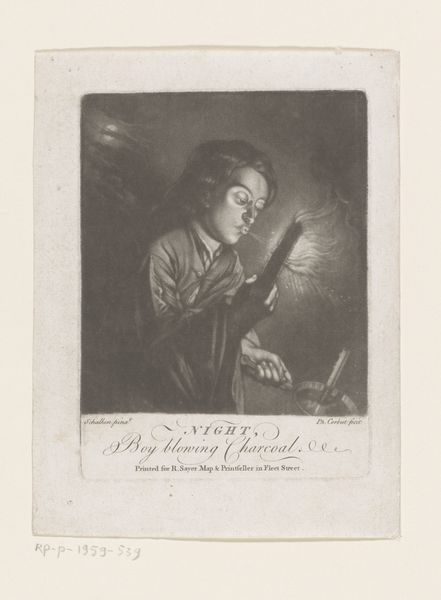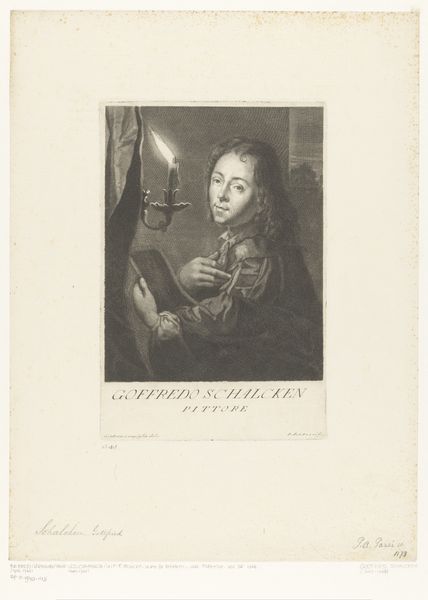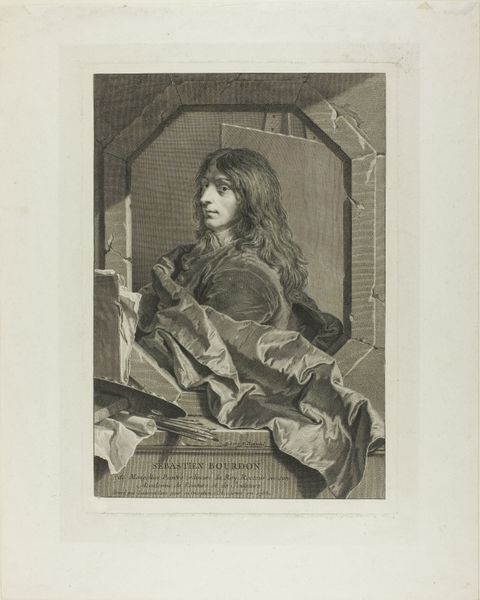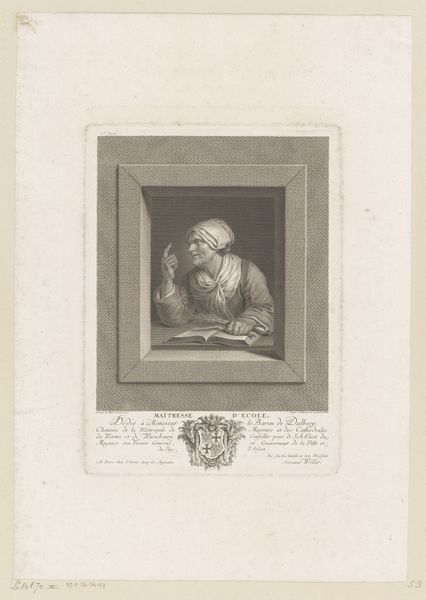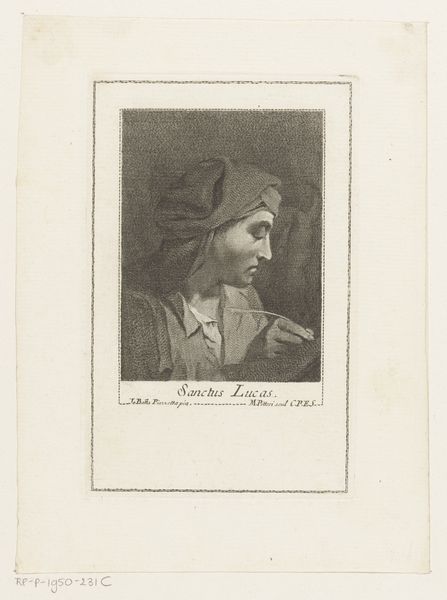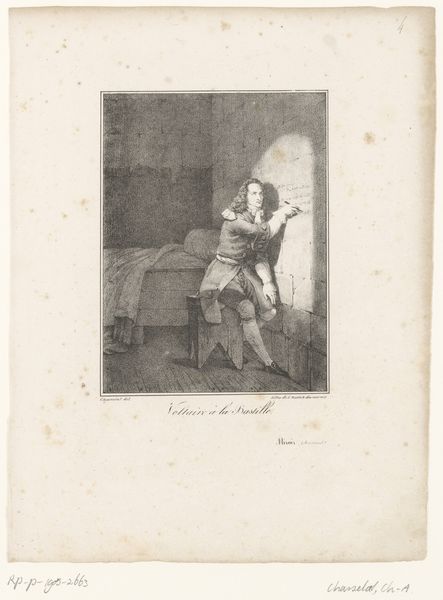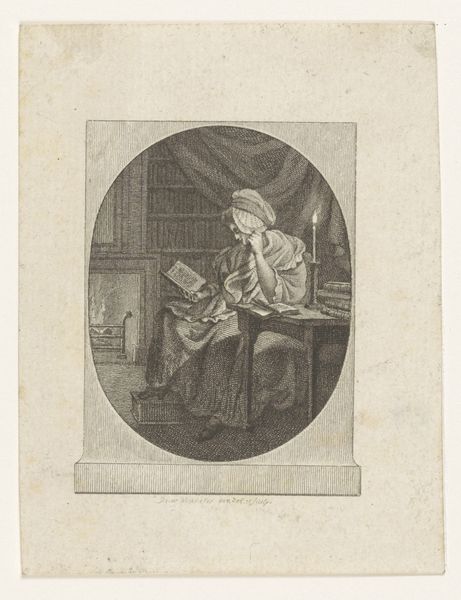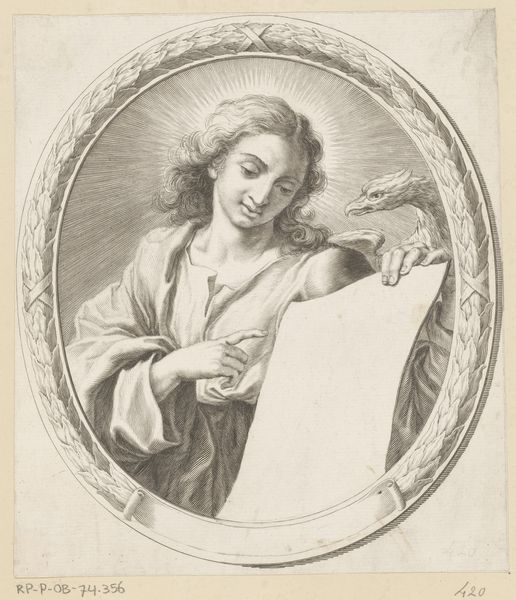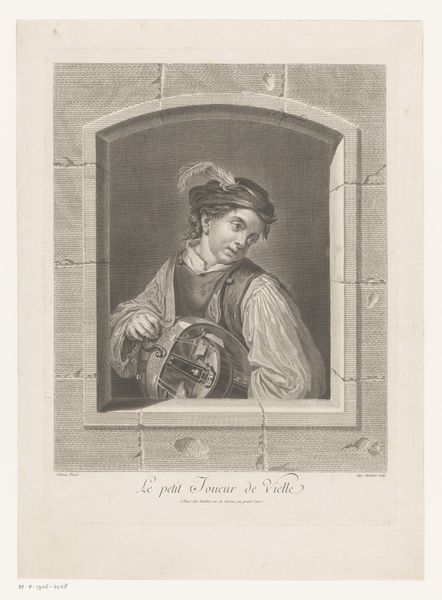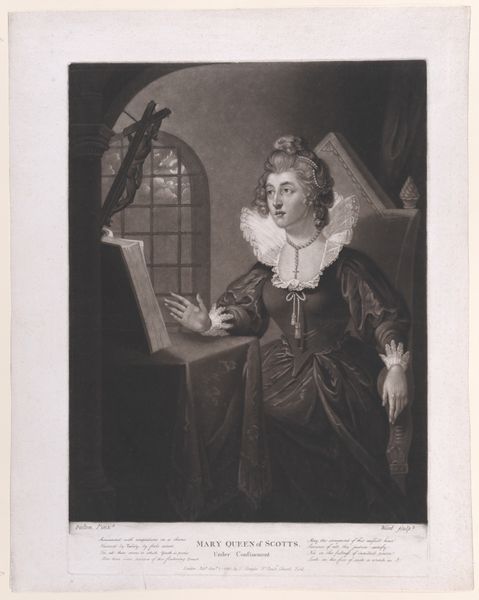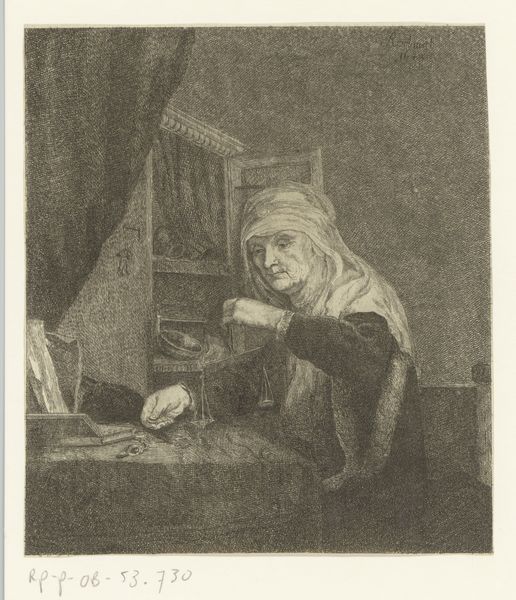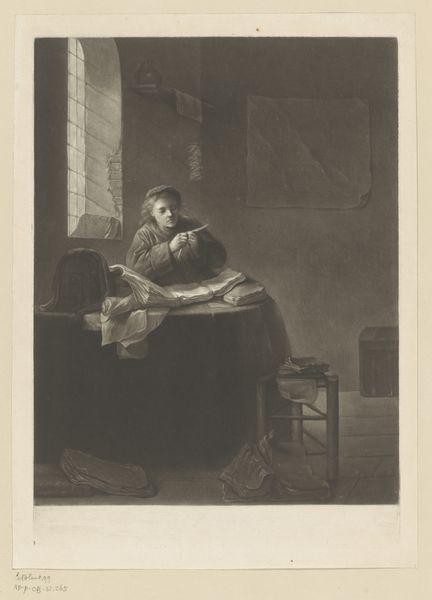
Dimensions: height 354 mm, width 253 mm
Copyright: Rijks Museum: Open Domain
Editor: Here we have Richard Purcell’s charcoal drawing, "Boy Blowing Charcoal," created sometime between 1746 and 1794. I'm struck by how the single light source emphasizes the boy’s face and hands, contrasting so strongly with the darkness around him. What do you see in this piece? Curator: Beyond the obvious contrasts, I'm drawn to how this image speaks to the labor and lived experience of marginalized communities. Who was this boy? What were the social structures that placed him in a position to be blowing on charcoal for light? Notice the implied class distinctions. Consider the period’s prevailing notions of childhood innocence, juxtaposed against what appears to be child labor. Editor: That's fascinating. I was focusing mainly on the composition and the dramatic use of light, I didn't consider the boy's position. Is this something we often find in genre paintings from this time? Curator: Often, yes. Genre scenes frequently functioned as both observations of daily life and as social commentary. They provided a glimpse into the lives of those often overlooked, yet can simultaneously perpetuate romanticized or even exploitative portrayals. Whose gaze does this artwork serve? Is it empathetic or voyeuristic, or something in between? How do we as contemporary viewers navigate the historical context with our present-day understanding of labor, class, and childhood? Editor: This really changes how I see the artwork. It's not just a charming scene, but something that encourages critical reflection on social structures and power dynamics of the time. Curator: Exactly. And that's where the power of art lies - in sparking conversations about our past and present. We have to think about what's missing. The image captures a moment but hints at a larger history. What stories aren't being told, and whose voices remain unheard?
Comments
No comments
Be the first to comment and join the conversation on the ultimate creative platform.
